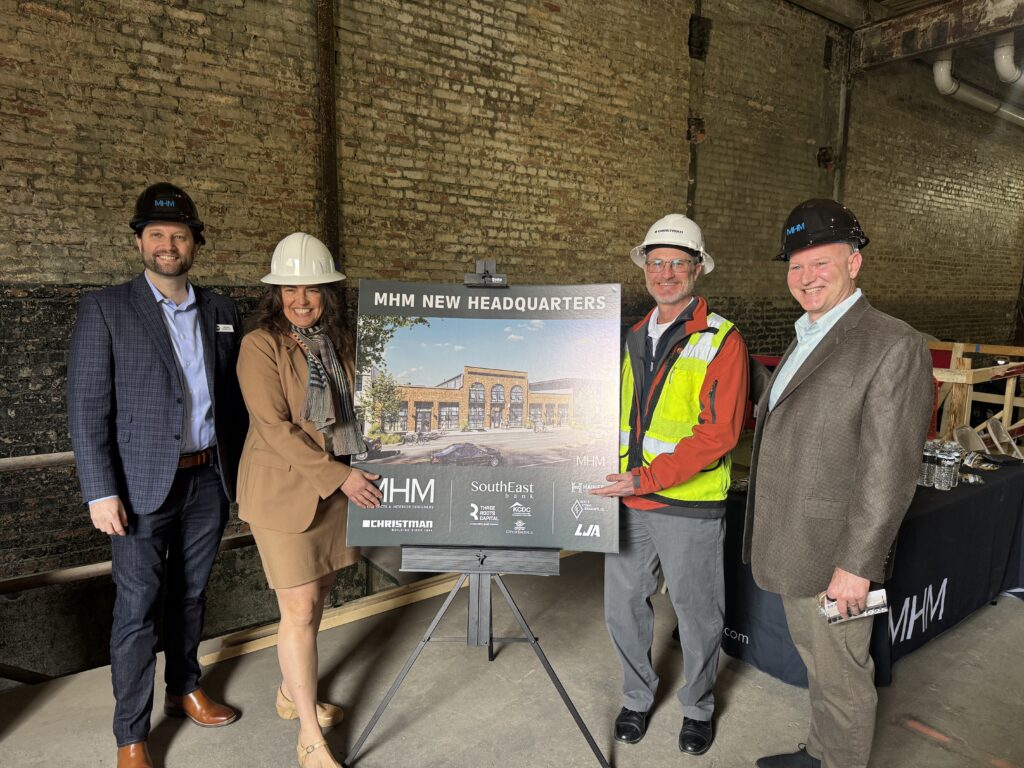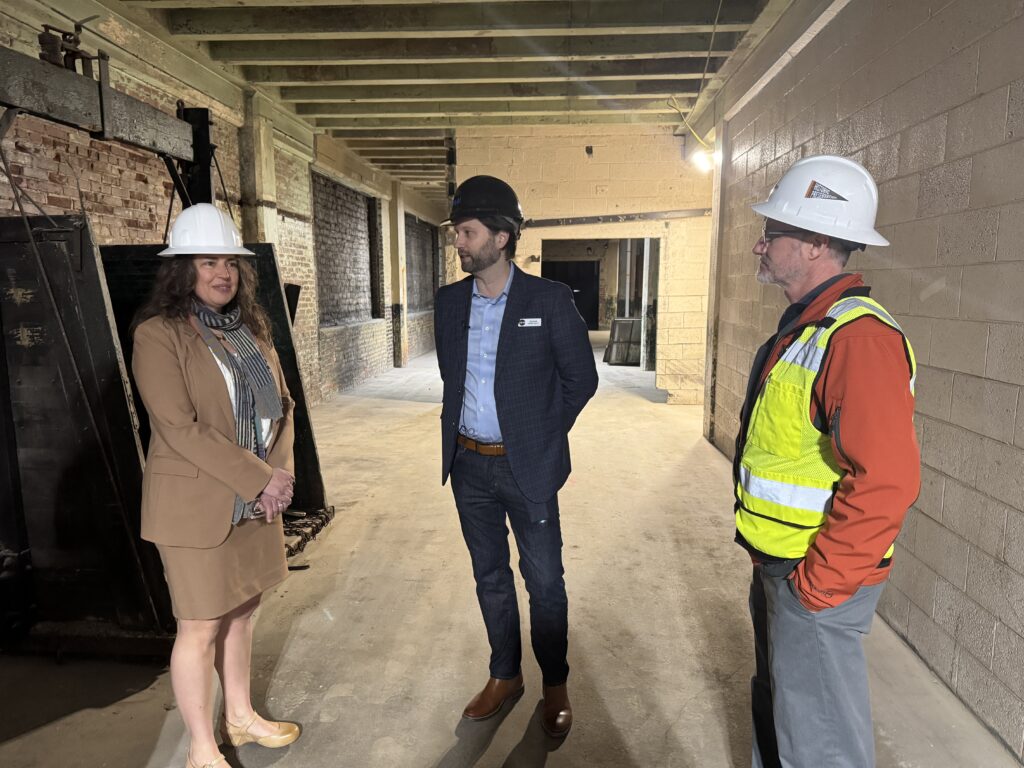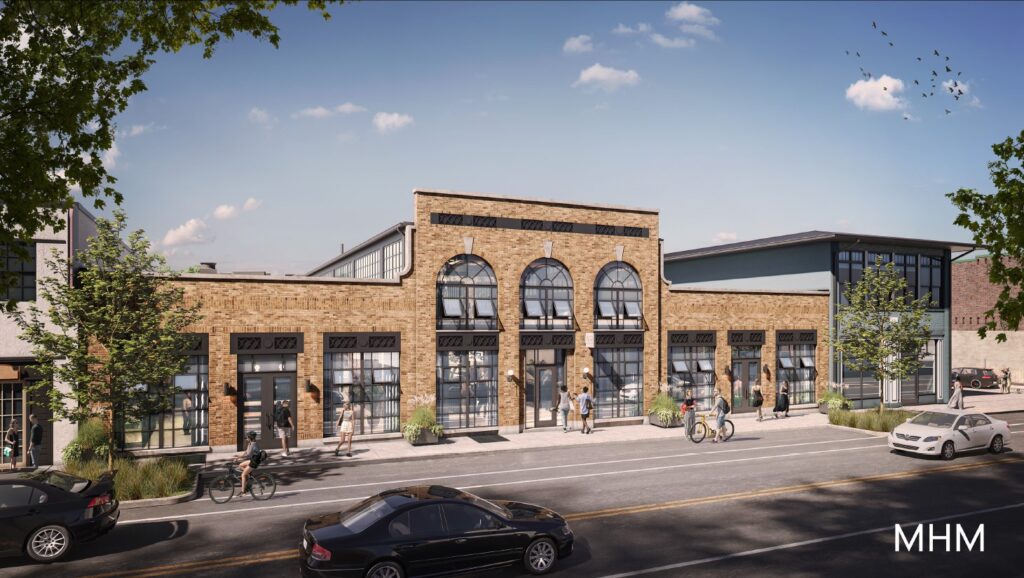
Construction management firm The Christman Company is leveraging its construction and historic preservation expertise to help restore a once beloved but recently blighted property back to relevant distinction.

The Sanitary Laundry building was lauded as state of the art when the dry cleaner opened at 625 N. Broadway in 1925. The North Knoxville facility used modern machinery, and its many windows optimized natural light. The building served as an industrial dry cleaner for nearly 70 years before closing its doors in 1993, leaving behind chemicals and compounds that posed challenges for real estate development until recent remediation could be completed.

From meticulously salvaging historic bricks to creating replica windows, Christman has partnered with McCarty Holsaple McCarty to bring the property into contemporary prestige as headquarters for the architecture firm as well as a commercial leasing space.
“The Christman Company has been privileged to be involved in some iconic Knoxville structures, from the Sunsphere to Neyland Stadium,” said Marty Gibbs, senior vice president and general manager for The Christman Company’s Knoxville operations. “We take a lot of pride in our ability to tackle complicated and historic projects, and we can’t wait to see this building transformed for MHM and North Knoxville.”

MHM purchased the property in January and construction has begun in earnest with some ambitious goals.
“We plan to seek LEED, WELL and Net Zero certifications to demonstrate not only that the building is energy efficient, but also that it will meet the highest standards for human health from water to air quality,” said Nathan Honeycutt, a principal architect with MHM. “The goal is for this to be the first building in East Tennessee to have both LEED and WELL certifications and it will likely be the first in the state to have all three.”
Leadership in Energy and Environmental Design (LEED) certification is a globally recognized standard for a building’s environmental sustainability. WELL Certified™ spaces have been evaluated on nearly 100 occupant health metrics, from the effectiveness of ventilation to moisture management. Net Zero Energy Building (NZEB) designation verifies that a building produces as much energy as it uses in a year. MHM is working with a local solar provider to add solar panels to the building plan.
The full-service architecture and interior design firm plans to use about half the renovated space for its offices and offer the rest for entrepreneurs and creatives along with some shared spaces, such as a meeting room and community café. The new building will be called The 625 Collective.
The Sanitary Laundry Building and the former Bar Marley structure behind it are both part of the Emory Historic District on the National Historic Register, which adds additional challenges and excitement to the project.
Christman will oversee efforts to:
- Salvage historic brick for reuse – some original brick will be removed by carefully cutting out each brick, cleaning off mortar and using it to replace damaged brick and rebuild parapet.
- Restore and replace damaged historic terra cotta in entrance lobby.
- Install replica windows to match original historic exterior windows.
- Restore existing interior metal window frames in terra cotta wall and use specialty glaze to replicate original glass.
- Preserve and repair plaster in main lobby.
- Tuckpoint exterior brick masonry – tuckpointing a historic facade requires using a small grinder to cut a groove in center of mortar joint to relieve pressure from the grout so a hammer and chisel can be used to minimize risk of spalling, where a brick peels or flakes.
- Retrofit historic space to meet ADA requirements by using original construction features, such as freight elevator opening and loading ramp.
- Introduce heating and cooling systems while maintaining historic character.
- Install vapor mitigation system under building to address previous life of building.
- Create inviting and intentional courtyard.
Construction is expected to be completed in the fall of 2025.
For more information about The 625 Collective, visit the625collective.com.
About The Christman Company
The Christman Company, founded in 1894, is one of the country’s leading professional construction services firms. The company’s award-winning services include construction management, general contracting, design/build, program management, real estate development and self-perform services. Christman specializes in a variety of construction markets, including government, higher and K12 education, industrial and power, healthcare, and corporate office. Ranked at No. 87 in the Engineering News-Record ENR 400 top contractors nationally and No. 44 in the ENR 100 Construction Management-at-Risk firms, Christman has more than $6 billion in construction underway managed by 500 professional employees across five states throughout the Southeast U.S., the Midwest, the Southwest U.S., and the Mid-Atlantic. In 2021 Christman formalized its Diversity, Equity and Inclusion (DEI) program by forming a dedicated DEI Council representing diverse members from across the regions we serve. Click this link to read more about our activities and focus on DEI. For more information, visit https://www.christmanco.com, and connect on Facebook and LinkedIn.



